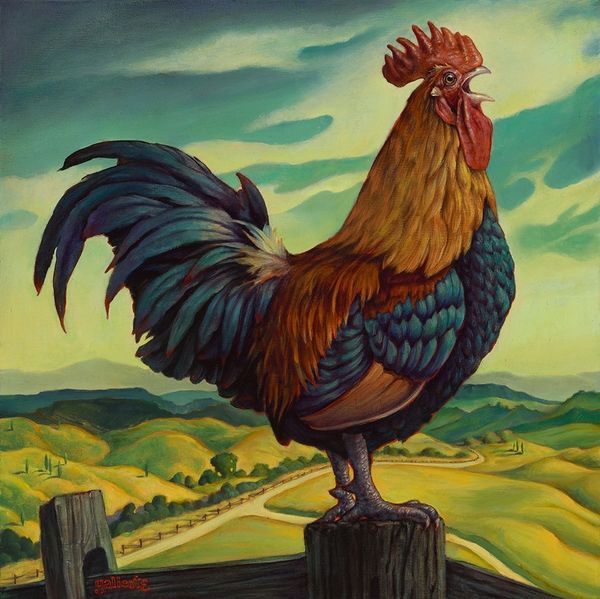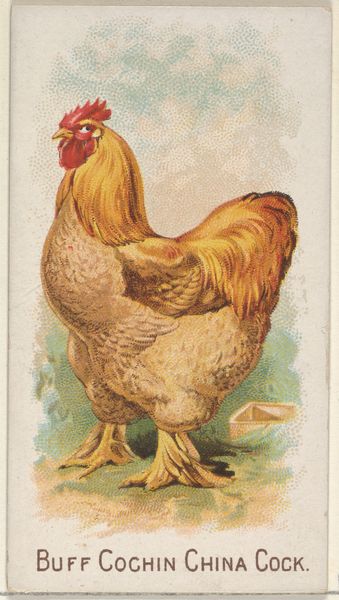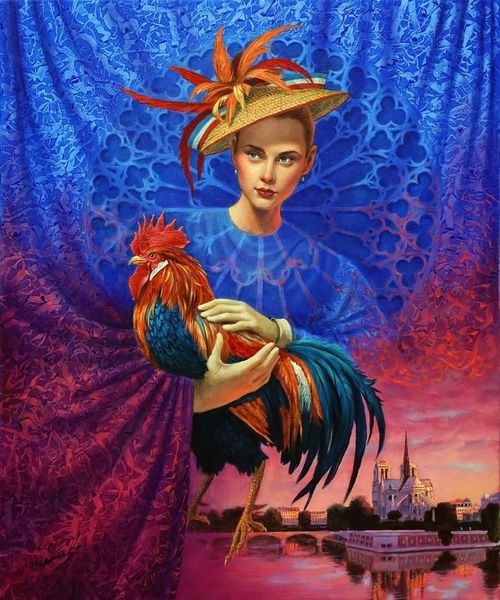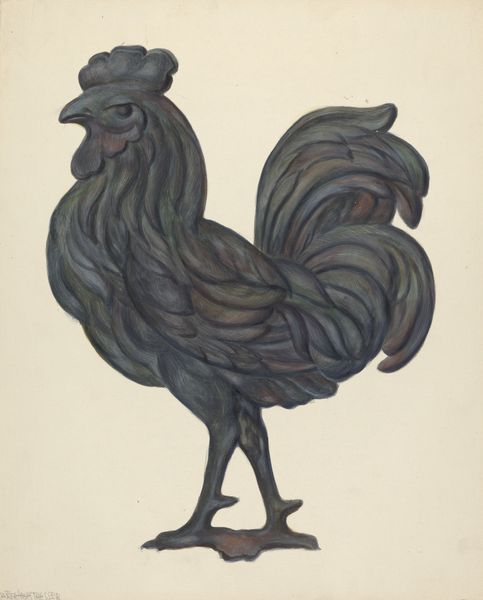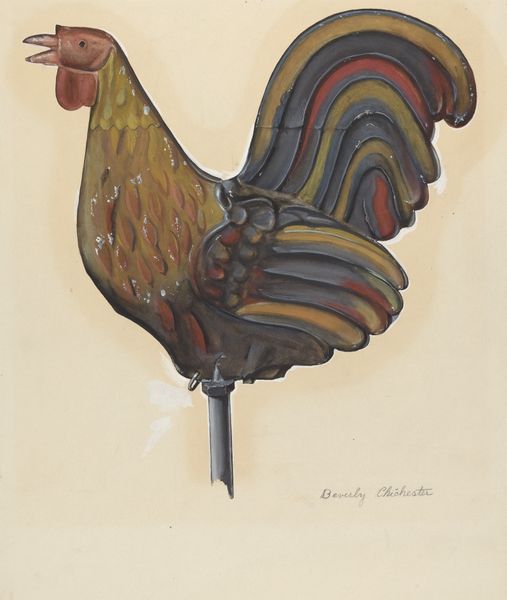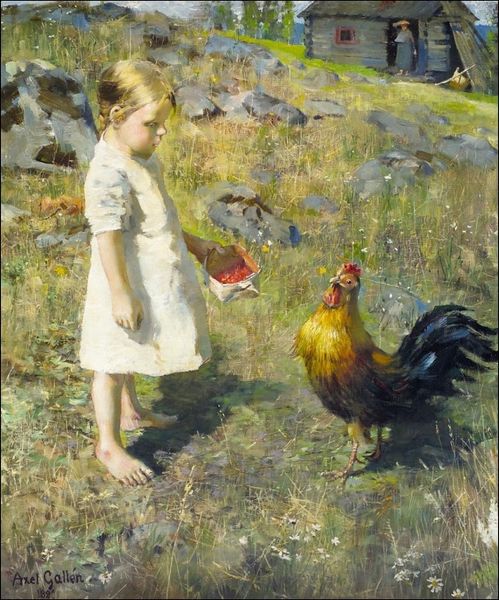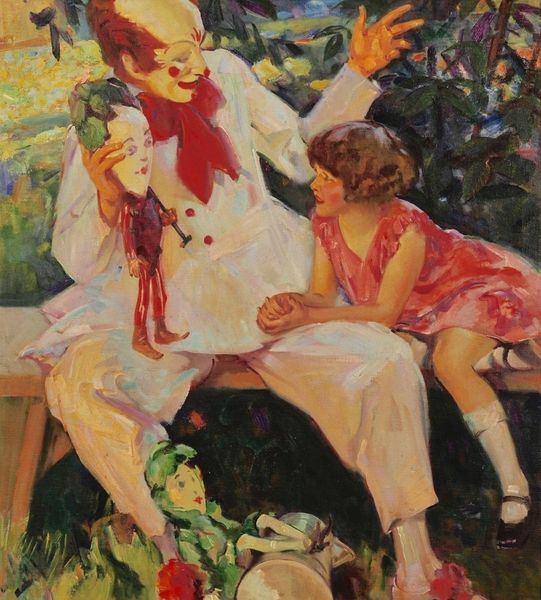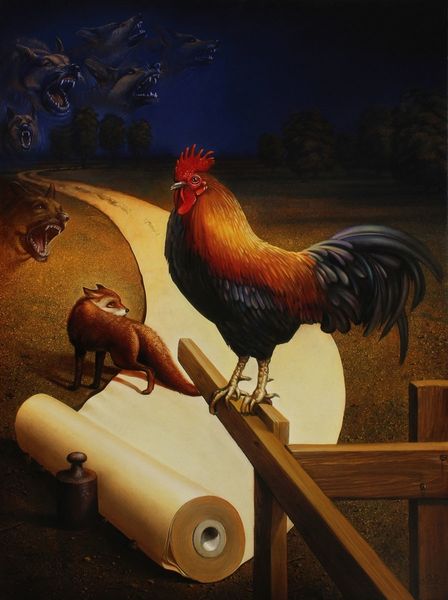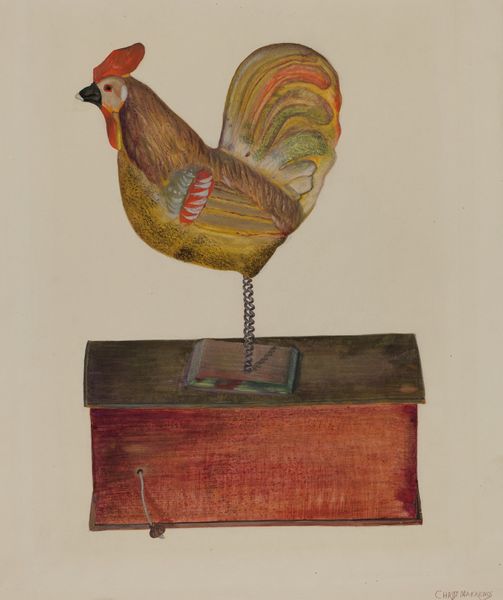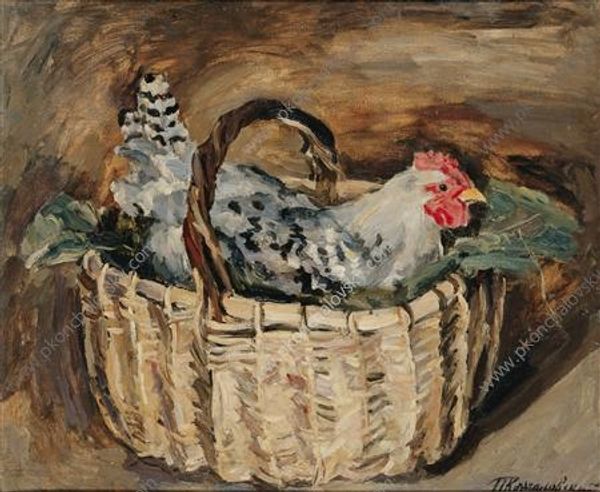
oil-paint
#
portrait
#
oil-paint
#
figuration
#
oil painting
#
naive art
#
genre-painting
#
realism
Dimensions: 81 x 65 cm
Copyright: Rafael Zabaleta,Fair Use
Curator: Alright, let's wander over to Rafael Zabaleta's "Boy sitting with a hen on his lap," created in 1943 using oil paint. Editor: Immediately, I see a strange juxtaposition: a naive innocence alongside what feels like a muted kind of foreboding, almost like the stillness before something significant shifts. The colors have a nostalgic, grainy filter about them, with a tangible texture that’s very captivating. Curator: Texture is key, absolutely. There’s this folk-art quality that softens the potential weight of the composition. Genre painting provides snapshots of everyday life—and here, the boy cradling this bird isn't some staged spectacle, it whispers of daily rurality. Is the hen a symbol, a pet, dinner, or perhaps, a little bit of everything to the boy? Editor: The hen itself is quite regal despite the setting. The symbol of the cock dates way back, right? Think about ancient Rome! Here it feels...almost Christ-like; vulnerability and potent vitality tangled together. And the boy's stillness is rather striking, he is like the future caretaker in repose, contemplative... It's very earthy, you know, deeply tied to the land and its cycles. Curator: Zabaleta had a fascination with portraying working-class folk. The setting may seem idyllic, a garden with sunshine dappling through, but there is almost a heavy and contemplative undertone to the subject’s gaze and the scene more generally. Zabaleta seems to be reflecting on simpler times that have both charm and their own set of challenges. Editor: Do you think it is deliberate or not? All those soft pastels belie that heavy stillness. It could simply be naive artistry as a rendering...yet... It is about a child, and a hen - but, wow - the layers beneath the brushstrokes start telling bigger stories around history, sustenance and continuity through symbols. It transforms an everyday encounter into an iconic one, filled with possible futures or perhaps a passing present! Curator: I believe it is both! Zabaleta has clearly composed the piece with meaning in mind but has also embraced what makes rural life both beautiful and melancholic: its ever-changing nature and timeless themes. Editor: In that sense, I can't help but see the future encoded into their posture; the boy cradling his companion, the bird as an almost-eternal figure, representing this delicate tension of co-existence and continuation through a beautiful and powerful work of art.
Comments
No comments
Be the first to comment and join the conversation on the ultimate creative platform.
